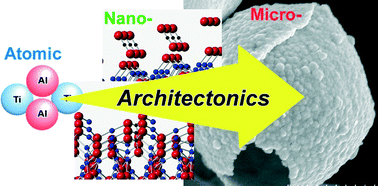Atomic architectonics, nanoarchitectonics and microarchitectonics for strategies to make junk materials work as precious catalysts
Abstract
In order to solve problems of limited resources and their unbalanced distributions, considerable efforts to replace precious elements with naturally abundant elements have been made using various approaches. In this highlight article, we briefly introduce several recent examples of the use of earth-abundant elements for producing environmentally friendly catalysts with performance efficiencies comparable to those made from precious metals on the basis of three types of architectonics: atomic architectonics, nanoarchitectonics, and microarchitectonics. Atomic architectonics has been applied to make highly efficient catalysts of the activation of molecular hydrogen, NO oxidation, and photo-driven water splitting with inexpensive elements through well-considered combinations and compositions of these elements. Applying nanoarchitectonics to control lattice features and produce hierarchical arrangements of “junk” materials such as CuO have made these materials catalyze the consumption of NO better than Pt catalysts and as well as Rh catalysts. Larger-scale control of morphology by applying microarchitectonics has been used to effectively avoid the agglomeration of catalyst particles and hence suppress the degradation of these catalysts as well as to minimize the use of precious-element catalysts.


 Please wait while we load your content...
Please wait while we load your content...